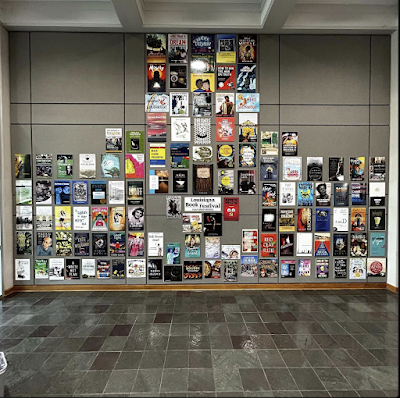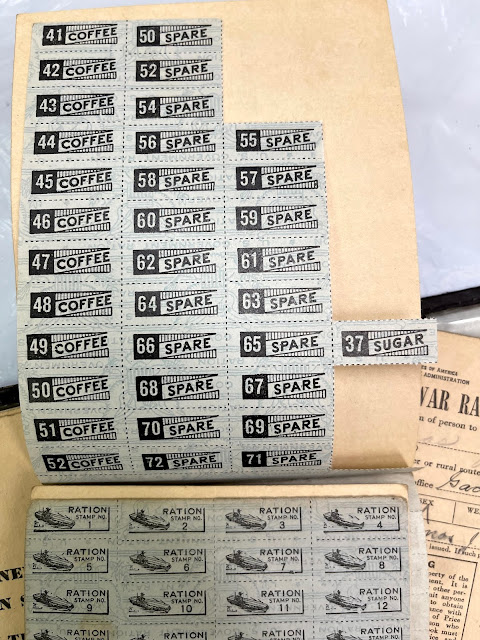Wednesday, November 22, 2023
Auburn vs. Birmingham-Southern in 1938
Friday, November 17, 2023
Tennant S. McWilliams, PhD [1943-2023]
I wanted to note the passing on October 23 of UAB Professor Emeritus and historian Tennant S. McWilliams, who served as Dean of the School of Social Behavior and Sciences from 1990 until 2007. He graduated from Birmingham-Southern in 1965, then earned a master's at the University of Alabama in 1967 and a PhD from the University of Georgia in 1973. The following year he began his career at UAB, which lasted until retirement in 2010. During those years he had not only served as a dean, but in several other administrative posts at the university.
He published several books; three of them are noted below. I've found the UAB history very useful.
- Hannis Taylor: New Southerner as American. University of Alabama Press, 1978.
- The New South Faces the World: Foreign Affairs and the Southern Sense of Self. Louisiana State University Press, 1988. Paperback 2006.
- New Lights in the Valley: The Emergence of UAB. University of Alabama Press, 2008.
- The Chaplain’s Conflict: Good and Evil in a War Hospital. Texas A&M University Press, 2012.
- Dixie Heretic: The Civil Rights Odyssey of Renwick C. Kennedy. Forthcoming. University of Alabama Press, 2023.
Friday, November 10, 2023
Alabama at the Louisiana Book Festival, 2023
On October 28 Dianne and I attended the Louisiana Book Festival in Baton Rouge. Our son Amos appeared on two panels as noted below in support of both his books, the new novel Petrochemical Nocturne and his 2018 collection of stories, Nobody Knows How It Got This Good. We were also at the 2018 festival shortly after his first book was published.
As you can see from the schedule below, this book festival is a one-day event packed with panels of authors, demonstrations of various sorts, and a massive book tent where signings and lots of purchases take place. Oh, and food trucks. Despite pretty warm weather, the event drew hordes of people, kids, and dogs.
The festival also attracts authors of all sort of books--fiction, non-fiction, poetry, memoirs, children's, cookbooks, etc. Naturally, Amos wasn't the only author with Alabama connections. Others included Kari Frederickson, a history professor at the University of Alabama and author of Deep South Dynasty: The Bankheads of Alabama, and prolific novelist Carolyn Haines, who was inducted into the Alabama Writers Hall of Fame in 2020. Novelist and freelance author Terah Shelton Harris and poet Rodney Jones also appeared.
You can read more about Amos and his writing here.
Friday, November 3, 2023
Ration Books in World War II
In the summer of 1941 rationing increased in the United Kingdom due to military needs and German attacks on shipping in the Atlantic. The government there asked the U.S. to conserve food, and the U.S. Office of Price Administration began warning Americans of potential shortages in gasoline, steel, and other areas. The OPA created a rationing structure after the attack on Pearl Harbor on December 7, 1941.
Local officials chose volunteers for 5500 ration boards around the country. A system of books and stamps given to individuals in families were used to obtain rationed goods. Some stamps specified the rationed product, others were later associated with other goods. For instance, one airplane stamp allowed a person to buy a pair of shoes; stamp number 30 from ration book four was needed for five pounds of sugar. Other strictly regulated products included tires, gasoline, meats, cooking oil, butter and canned goods. All household members received ration books, as did merchants of all types. As you might expect, a black market quickly developed. Read more details about U.S. rationing during World War II here.
Ration books were issued in four waves during the war. Book 1 came out in May 1942 and applied to sugar. In January 1943 Book 2 appeared with blue and red stamps. Blue covered canned goods, and red later went into use for meats, fish and dairy products. Book 3 in October 1943 utilized brown stamps for meats, canned milk, cheese, butter and lard. Book 4 had been issued in July and August 1943 with green stamps for processed foods such as canned, frozen or dried. Black stamps labelled "spare" were included for future use.
As if that weren't complicated enough, gas rationing was achieved with four types of use. Class A allowed 3-5 gallons a week for shopping, church, and doctor visits. Class B applied to factory workers and traveling salesmen, who received 8 gallons per week. Classes C [essential war workers, police, doctors, mailmen] and Class T [truck and bus drivers] had no restrictions.
Our family is blessed--some might say cursed--with all sorts of paper ephemera from past decades. The ration books shown here are examples. See more comments below.








































